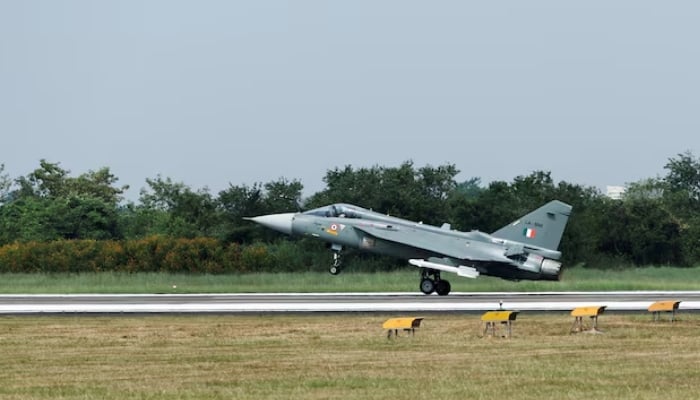
India’s defense and aviation sector suffered a major blow when its indigenously made Tejas Mk-1A fighter jet crashed during an air show at the Dubai Airshow 2025 on Friday.
The pilot lost his life in the deadly crash, and the Indian Air Force announced that a court of inquiry was being constituted “to determine the cause of the accident.”
“The IAF deeply regrets the loss of life and strongly supports the bereaved family in this time of grief,” a post on the IAF’s official X account read.
The fighter jet involved in the crash is India’s first indigenous fighter and made its maiden flight in January 2001, according to a report by AFP.
While the concept of a self-built fighter aircraft began in the 1970s, actual work on the aircraft project began in the 1980s.
However, Indian state-owned Hindustan Aeronautics Limited’s (HAL) fighter jet project has faced years of criticism due to delays and cost overruns.
After years of delays, the first two Tejas fighter jets were finally delivered to the IAF in 2016.
India designates the single-engine aircraft as a multi-role light combat aircraft, with a delta wing design.
HAL has reportedly equipped the modern variants with advanced avionics, an Active Electronically Scanned Array (AESA) radar and improved electronic warfare systems.
According to Indian media, the fighter jet can carry extended range (ER) I-Derby and BVR (beyond visual range) Astra air-to-air missiles.
Tejas is also reportedly capable of firing short-range missiles like the R-73, Python-5 and ASRAAM.
Recently, India signed an agreement with the American General Electric to buy 113 engines for its Tejas fighter jets. Reuters reported.
In a Nov. 7 statement, HAL said the deal was a follow-up order to power more fighter jets, with the engines expected to be delivered in five years from 2027.
The launch of the fighter jet has been delayed due to slow deliveries by General Electric of 99 engines ordered in 2021, of which only four have arrived so far. GE has blamed supply chain problems following COVID-19.



